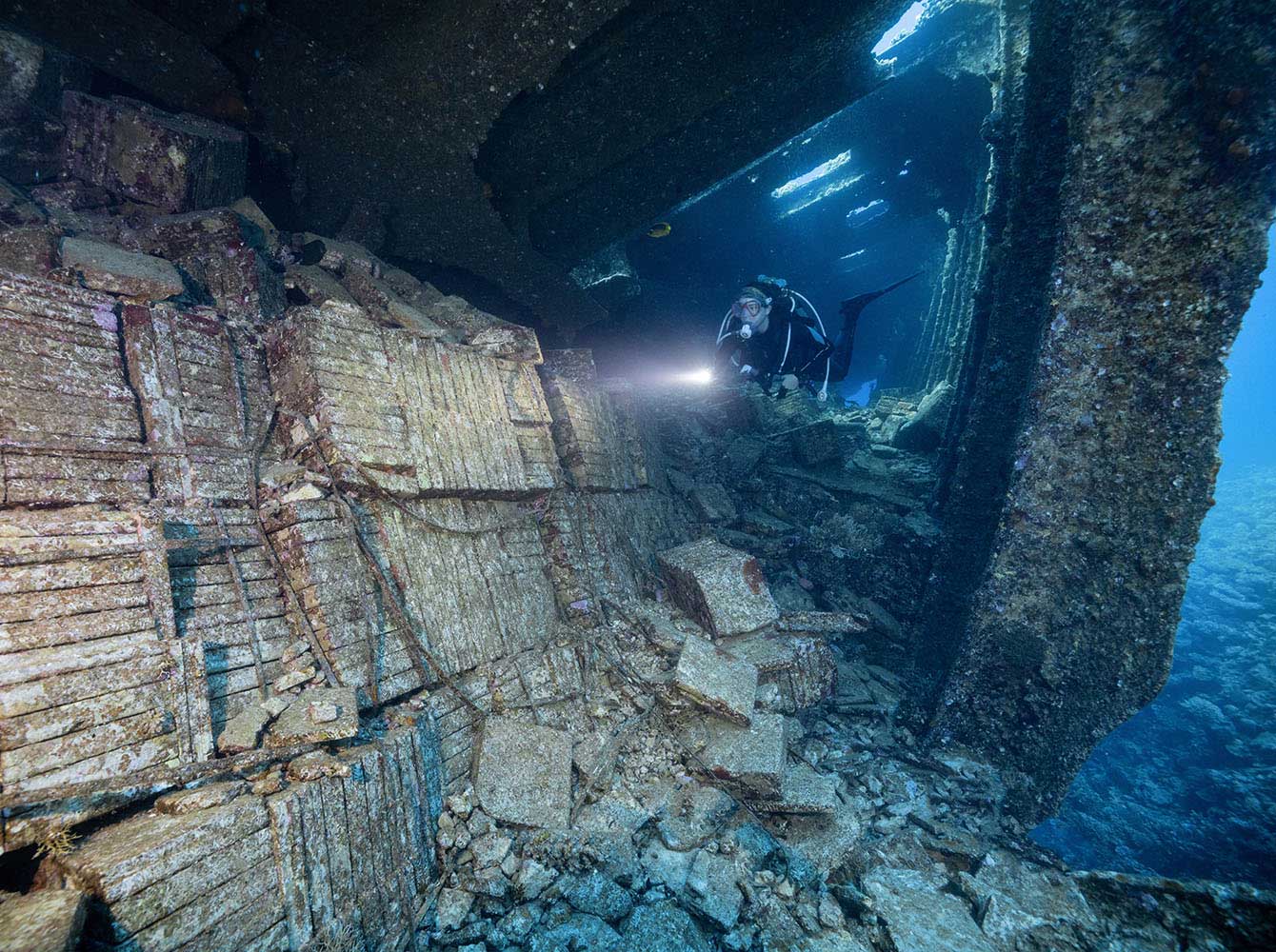
Red Sea Liveaboard Diving - An Underwater Journey
The coral landscapes here are breathtaking. The Red Sea is a canvas of colors, painted with over 200 types of soft and hard corals. These intricate structures, shaped by nature over countless years, are not just beautiful but also serve as habitats for numerous marine species.
Red Sea liveaboard diving is a blend of ancient exploration, modern discovery, and an ever-growing appreciation of its underwater majesty. As we plunge into its depths today, we're not just experiencing the marine life but also diving into pages of history that have shaped this extraordinary sea.
About Red Sea Liveaboard Diving
Red Sea liveaboard journey is more than just a dive trip; it's an invitation to experience the wonders of the underwater world.
History of Red Sea Diving
The Red Sea, found between the northeastern African continent and the Arabian Peninsula, has for millennia been a crucial crossroad for commerce, culture, and exploration. Its translucent waters and vibrant marine life, however, have also crafted its reputation as a diving haven, with a history as intriguing as its underwater landscapes.
The allure of the Red Sea's underwater world was not an invention of modern tourism. Ancient civilizations, like the Egyptians, were known to explore its waters, albeit primarily for trade and navigation rather than recreation. Still, the foundational knowledge they accumulated about the sea's topography, currents, and potentially hazardous regions laid the groundwork for future exploration.
It wasn't until the 20th century, with the advent of modern scuba diving equipment, that the Red Sea began to gain traction as a recreational diving destination. Jacques Cousteau, the legendary marine explorer, played a pivotal role in popularizing the Red Sea as a diving locale. Armed with his newly invented Aqua-Lung in the 1950s, Cousteau and his team explored and documented the Red Sea's underwater treasures, introducing its wonders to a global audience.
One of the key factors that catapulted the Red Sea onto the global diving scene was the discovery and exploration of numerous shipwrecks. The most renowned of these is the SS Thistlegorm, a British cargo ship sunk by German bombers during World War II. The discovery of this and other wrecks provided divers with unique underwater museums, blending marine biology with human history. Today, these shipwrecks serve as some of the most sought-after dive sites in the world.
By the late 20th century, the Red Sea's reputation as a premier dive destination was firmly established. Resorts sprung up along its shores, especially in towns like Hurghada and Sharm El Sheikh. The rise of liveaboard diving trips in the latter part of the century further opened up remote parts of the Red Sea to divers, allowing for a more immersive and extensive exploration of its reefs and marine life.
Red Sea Liveaboards
The Red Sea liveaboards provide diving itineraries in two different areas: North and South. Depending on the liveaboard you choose as well as the itinerary, you may get the chance to visit both northern and southern areas.
North Red Sea
The Northern Red Sea offers a mix of historical intrigue and natural beauty. Here, divers can explore well-preserved shipwrecks like the SS Thistlegorm, a British vessel that sank during World War II. These wrecks, now encrusted with corals, offer a glimpse into the past and are home to various marine species. Besides the wrecks, the Northern Red Sea also boasts stunning reefs, such as those found in the Ras Mohammed National Park, where the sheer abundance and diversity of marine life never cease to amaze.
South Red Sea
In contrast, the Southern Red Sea offers a more remote and pristine diving experience. Areas like Daedalus Reef, The Brothers or Elphinstone are renowned for their untouched beauty. Here, divers can glide along steep walls, navigate through intriguing caves, and meander through coral gardens that shimmer with life. The Southern region is also a hotspot for encounters with large pelagic species, making every dive an adventure of anticipation.
Conservation Efforts
As the popularity of diving in the Red Sea grew, so did the concerns about its environmental impact. The increased footfall of divers and the growth of coastal developments threatened the delicate marine ecosystem. Recognizing the need for action, both local governments and international entities have established marine protected areas, like the Ras Mohammed National Park, ensuring that the beauty of the Red Sea remains preserved for future generations.
How to Get There
Getting to the Red Sea in Egypt for a liveaboard adventure is relatively straightforward. Major international airports like Hurghada and Sharm El Sheikh service the Northern Red Sea, with numerous airlines offering direct and connecting flights from around the world. For the Southern Red Sea, Marsa Alam is the primary gateway, with its airport welcoming flights from various international locations. Once you arrive, many liveaboard operators offer convenient transfers, ensuring a seamless journey from the tarmac to the turquoise waters of the Red Sea.
Essential Travel Tips for Liveaboard Adventures
- Marine Park Fees: Be aware of per person, per day marine park fees. Some liveaboard packages include these fees, while others require onboard payment. Payment options include Visa, Mastercard, cash, or travelers checks.
- Passport Validity: Ensure your passport is valid for at least 6 months after your planned entry date. Most countries require this, along with a return ticket. Check visa requirements in advance.
- Health Preparations: Consult your doctor 8 weeks prior to your trip for vaccinations or preventive measures recommended for your destination.
Note: Please review the specific terms and conditions of your chosen liveaboard for any additional marine park fees or travel requirements.
We're Here to Help 24/7






